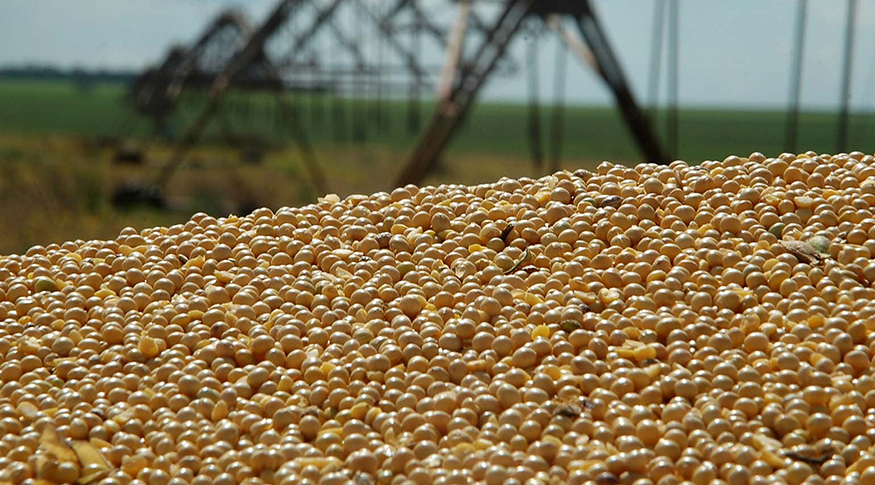Agricultura
Projection rises record of 2020 harvest to 249 million tonnes
March 10, 2020 09h00 AM | Last Updated: March 10, 2020 12h58 PM

The February estimate for the 2020 grain harvest hit another record, 249 million tonnes, which represents a rise of 3.1% over 2019, when it registered 241.5 million tonnes. It rose 0.9% (2.3 million tonnes) in relation to the previous month. The area to be harvested also increased, 1.8% against 2019 and 0.1% compared with the first 2020 estimate, reaching 64.4 million hectares. The data are from the Systematic Survey of Agricultural Production, released today (10) by the IBGE.
Rice, corn and soybeans represent 93.2% of the estimated output and account for 87.3% of the area to be harvested. In relation to the previous year, the area for corn increased 1.4% (3.9% in the first crop and 0.5% in the second crop), the area for soybeans, 2.6% and the area for upland cotton, 5.8%, while the area for rice declined 2.3%.
Concerning production, the increases were of 10.4% for soybeans, 1% for rice and 1.8% for upland cotton. Estimated at 125.2 million tonnes, the production of soybeans hits another record in the time series, as well as that of cotton, expected for 7.0 million tonnes. And the estimate for rice is 10.4 million tonnes.
“The growth of soybeans was mainly impacted by the revision of the average yield of the crop in Paraná, Goiás, Mato Grosso do Sul and Bahia. The production of this grain retracted in 2019 in Paraná, São Paulo and Mato Grosso do Sul, due to the excess of heat and shortage of rainfall. Yet, the fair prices of this commodity along the last months of 2019 encouraged the producers to invest in this crop, which caused an expansion in the area to be harvested", remarks Carlos Antônio Barradas, manager of the survey.
On the other hand, a decrease of 4% is expected for corn, which should rise 4.2% in the first crop and drop 6.9% in the second one. The total output should reach 96.5 million tonnes (27.1 million tonnes in the first crop and 69.4 million tonnes in the second one). Barradas highlights that the drop actually reflects a high comparison basis.
"In 2019, the production of corn - second crop was a record in the IBGE´s time series, due to the climate that favored the Brazilian crops. Soybeans were not early planted in this agricultural year, which increases the risks of the second crops as it restricts the planting window of this cereal. However, investments in technology are expected to increase, since the corn prices remain at high levels, as a result of the increasing demand for this cereal", highlights the researcher.
In relation to the previous month, the estimates in the production of coffea canephora (3.9% or 33.3 thousand tonnes), sorghum (1.7% or 46.0 thousand tonnes), soybeans (1.5% or 1.9 million tonnes), sugarcane (0.7% or 4.5 million tonnes), beans- 1st crop (0.7% or 8.7 thousand tonnes), corn - 2nd crop (0.4% or 280.4 thousand tonnes), corn - 1st crop (0.3% or 71.1 thousand tonnes), and coffea arabica (0.0% or 834 tonnes) increased. Nevertheless, beans - 2nd crop (-0.9% or 11.1 thousand tonnes) and cassava (-1.8% or 355.2 thousand tonnes) dropped.
All Brazilian regions increased their output
All the regions increased the agricultural production: Central-West (1.2%), North (3.4%), South (5.4%), Northeast (7.2%) and Southeast (1.4%). The volume of the production in the Central-West was of 112.9 million tonnes (45.3%), South, 81.4 million tonnes (32.7%), Southeast, 24.1 million tonnes (9.7%), Northeast, 20.6 million tonnes (8.2%) and North, 10.1 million tonnes (4.1%).
In the distribution of the production by Federation Unit, Mato Grosso leads as the biggest national grain producer with a share of 26.9%, followed by Paraná (15.9%), Rio Grande do Sul (14.1%), Goiás (10.2%), Mato Grosso do Sul (8.0%) and Minas Gerais (5.9%). These states together accounted for 81.0% of the national overall. In relation to the participation of the Brazilian regions, the distribution is as follows: Central-West (45.3%), South (32.7%), Southeast (9.7%), Northeast (8.2%) and North (4.1%).



















